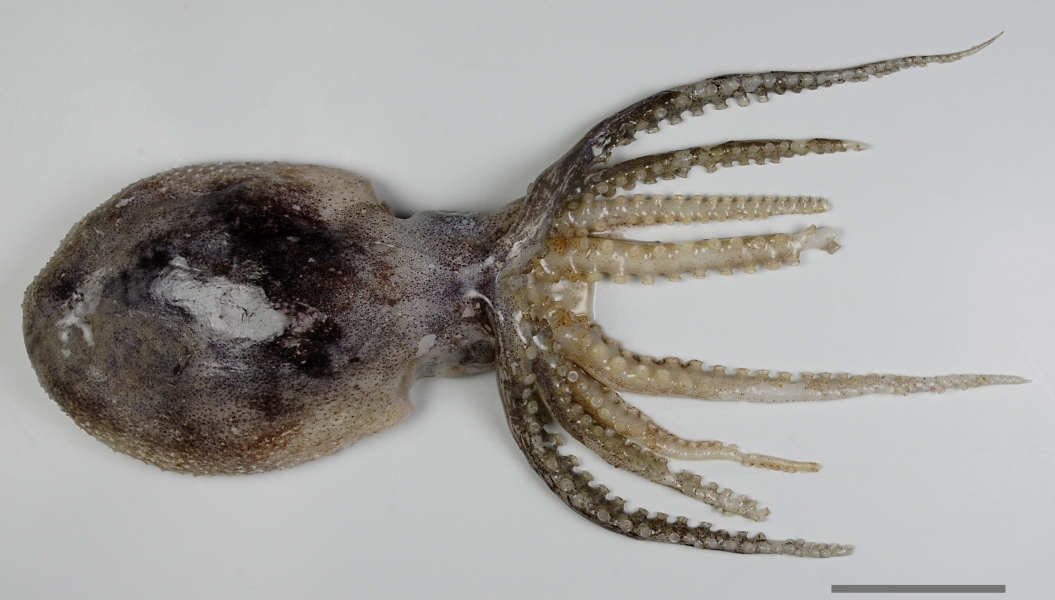Most octopus species live on or close to the bottom, but there are exceptions.
We know of a few pelagic (living in the water column over deep water) species, and as it happens, many of these are found in New Zealand waters. Pelagic octopuses are often small and gelatinous, but there are notable exceptions such as the seven-arm octopus Haliphron atlanticus, the largest known specimen of which was captured in New Zealand waters and is estimated to have weighed 75 kg’s and to have been about 4 metres long. This took scientists by surprise back then, since this species had only been found in the northern Atlantic by then.
See a BBC news report with the 2002 science story here.
Ocythoe tuberculata is another fairly large pelagic octopus and a widespread species in the temperate regions of the world’s oceans (including New Zealand). The muscular females can grow to 80 cm in overall length and larger females have a distinctive network of ridges on the ventral surface of the mantle (i.e. their underside looks like it is dimpled, see bottom image). Their front and back arms are longer than their side arms and they are thought to be strong swimmers. Female Ocythoe tuberculata are the only known cephalopod that gives birth to live young and one of the few cephalopods with a true swim bladder. All these facts make this such a unique species that it is put into a family of its own, the Ocythoidae.
In strong contrast the males are tiny and only grow to about 3 cm in mantle length. Somewhat bizzarely during mating the male detaches his hectocotylus (specialised reproductive arm) and passes it to the female (ouch!). The tiny males and young females are often found living inside salps. Look for the photo of a tiny Ocythoe inside the salp on this comprehensive Tree of Life website dedicated to this species:
Tree of life - Ocythoe tuberculata
This species is rare in our collection, so we were excited when we recently discovered a beautifully intact female. This specimen is obviously not fully grown but about half its maximum size when it was collected from the southern Taranaki Bight, west of New Zealand where the water is less than 80m deep.

